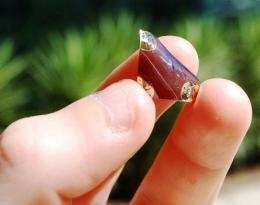It's a bit of cheating actually, a thin film of metal is placed on a plastic sheet and mixed into the polymer surface with an ion beam. The result is a cheap, flexible, and by nature of the embedded metal, conductive. Professors Paul Meredith and Ben Powell at the University of Queensland, with Professor Adam Micolich of UNSW School of Physics, adapted the ion beam method of altering the conductivity of semiconductors in silicon, but for plastic. "What the team has been able to do here is use an ion beam to tune the properties of a plastic film so that it conducts electricity like the metals used in the electrical wires themselves, and even to act as a superconductor and pass electric current without resistance if cooled to low enough temperature," says Professor Meredith.
The team demonstrated the potential by comparing thermometers made from the plastic versus platinum, and the plastic met the performance or exceeded its rival. The team is able to control the properties of the plastic per region, isolating conductive parts of a sheet.
UQ PH.D student Dr Andrew Stephenson examined the reports. "In fact, we can vary the electrical resistivity over 10 orders of magnitude – put simply, that means we have ten billion options to adjust the recipe when we're making the plastic film. In theory, we can make plastics that conduct no electricity at all or as well as metals do – and everything in between,” Dr Stephenson says.
Since the process of manufacturing the plastic is easy and the tools readily available, the team predicts that the tech should be adopted into future electronics quickly. Or so they hope.
Eavesdropper

